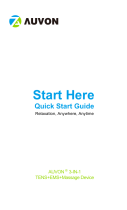
7
1. Application Areas
Today, a wide range of electronic equipment, including TVs, VCRs, audio systems,
telephones, refrigerators, washing machines, microwave ovens, and air conditioners, surrounds
us in our daily life. Since the seventies these home appliances have seen continuous progress
in terms of increased functionality and improved performance due to the use of 4-bit
microcomputers with superlative cost-performance. During this period 4-bit microcomputers
have seen both increased integration of memory and peripherals as well as cost reduction due
to increased CPU performance and revolutions in semiconductor precision manufacturing
technologies. As a result, 4-bit microcomputers have come to play a major role in supporting
the development of new consumer products. However, the market has come to demand
increased entertainment value and product satisfaction in consumer products. Simplified VCR
programmability, powerful tape editing functions in audio equipment, neuro-fuzzy control of
microwave ovens and washing machines, and improved man-machine interfaces (such as
display functions) in all types of equipment are examples of this trend.
Microcomputers with a large scale program ROM (at least 16 kbytes), superlative arithmetic
performance, and high processing speed are required to realize these new functions. From the
implementors’ standpoint, programming languages that support the efficient development of
large-scale programs are required. However, from an architectural standpoint, the 4-bit
microcomputer is limited both in arithmetic abilities and in software productivity. Now, the
8-bit CPU in the H8/300L Series has made its appearance to support improved functionality
and performance in consumer equipment. The H8/300L CPU provides a 64-kbyte address
space and the high speed performance of a 0.4 µs minimum instruction execution time.
Furthermore, this CPU realizes high software productivity, since it supports standard (IEEE
conforming) mnemonics and the highly efficient C programming language.
The H8/300L Series is a product line of microcomputers that takes this H8/300L CPU as their
core and inherits and extends the consumer product oriented peripheral functions that were
supported by Hitachi’s 4-bit microcomputers. Peripheral functions provided by this series
include vacuum fluorescent display (VFD) controller/drivers, liquid crystal display (LCD)
controller/drivers, A/D converters, D/A converters, synchronous and asynchronous serial
communication interfaces (SCI), tone generators for telephone and radio equipment, PWM,
and a wide variety of timers. The H8/300L Series product line consists of products that
combine sets of these modules appropriate for particular applications.
What is the H8/300L Series?




















